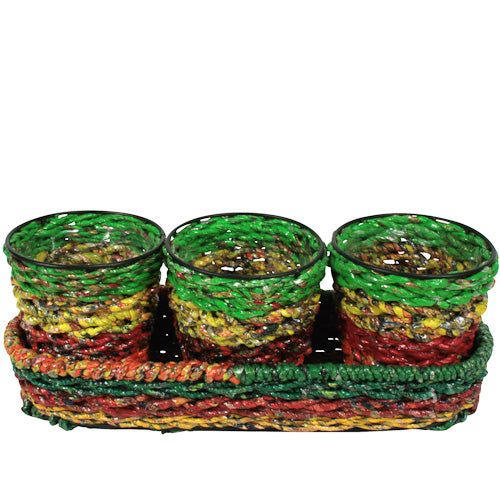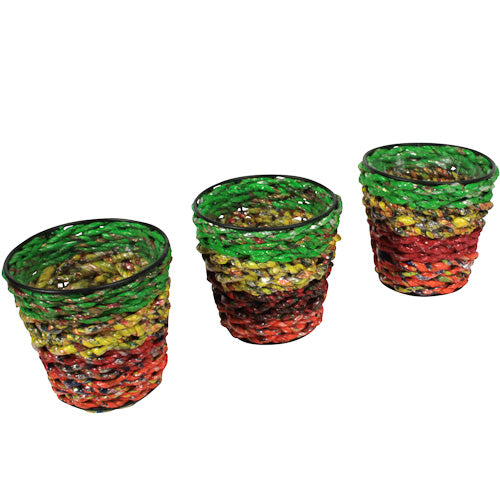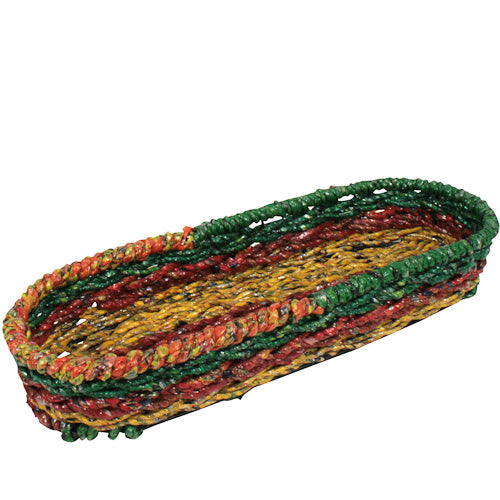OWP
Juego de 3 maceteros pequeños hechos con envoltorios de caramelos reciclados
Juego de 3 maceteros pequeños hechos con envoltorios de caramelos reciclados
No se pudo cargar la disponibilidad de retiro
Este juego de maceteros ecológicos está hecho de envoltorios de caramelos reciclados. Varios envoltorios de caramelos se retuercen formando una cuerda y se enrollan alrededor de un marco de metal reciclado. Un esfuerzo consciente por reducir y reutilizar los envoltorios desechados. Da un paso adelante y sé un habitante de la tierra responsable con estas jardineras.
Hecho a mano con materiales reciclados por artesanos en Noah 's Ark. Noah's Ark es una ONG fundada en 1986 por Samuel Masih, uno de los líderes en introducir el concepto de comercio justo en la India, mientras trabaja con varios artesanos, Noah's Ark también apoya a los artesanos y sus comunidades con muchos proyectos de bienestar.
- Cada maceta mide 4-1/4” de profundidad x 4” de diámetro
- Medidas de la bandeja: 2-1/4” de alto x 13” de ancho x 4” de profundidad
- Incluye inserto de plástico para plantas.
Hecho a mano en la India y importado de comercio justo.
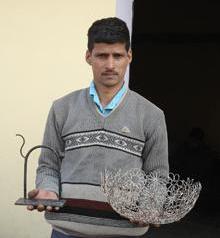 Este artículo fue hecho a mano en la India en un taller patrocinado por Noah's Ark, una ONG que ofrece financiación para materias primas, máquinas y reparaciones de talleres a 100 grupos de artesanos en toda la India. A cambio de asistencia, los talleres deben demostrar que todos los empleados reciben salarios justos por sus productos y trabajan en condiciones seguras y limpias. Noah's Ark también ofrece clases gratuitas sobre desarrollo de capacidades a su red de 600 artesanos, un riguroso control de calidad y ejecuta proyectos de educación y saneamiento de agua para beneficiar a los hijos de los artesanos y al resto de la comunidad. La empresa ha establecido 20 nuevos talleres en los últimos 15 años y todos los empleados reciben un salario entre un 10% y un 15% superior al salario local.
Este artículo fue hecho a mano en la India en un taller patrocinado por Noah's Ark, una ONG que ofrece financiación para materias primas, máquinas y reparaciones de talleres a 100 grupos de artesanos en toda la India. A cambio de asistencia, los talleres deben demostrar que todos los empleados reciben salarios justos por sus productos y trabajan en condiciones seguras y limpias. Noah's Ark también ofrece clases gratuitas sobre desarrollo de capacidades a su red de 600 artesanos, un riguroso control de calidad y ejecuta proyectos de educación y saneamiento de agua para beneficiar a los hijos de los artesanos y al resto de la comunidad. La empresa ha establecido 20 nuevos talleres en los últimos 15 años y todos los empleados reciben un salario entre un 10% y un 15% superior al salario local.
El Arca de Noé fue fundada por el Sr. Samuel Masih en 1986, antes de que nadie estuviera familiarizado con el concepto de "Comercio Justo". Masih, un hombre de negocios de Moradabad, India, observó que sus otros socios comerciales estaban cobrando una comisión personal de los artesanos metalúrgicos locales, además de pagarles salarios muy bajos por su trabajo. Esto generó un ambiente de trabajo desconfiado y de explotación, e inspiró a Masih a crear un entorno más colaborativo basado en la confianza y el respeto mutuo.
Después de dos años difíciles, Samuel explicó sus objetivos a la señora Sullivan de Sullivan Florist en los Estados Unidos. 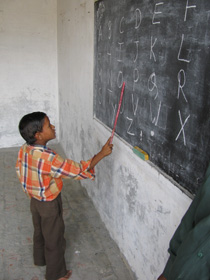 Estados Unidos, que inmediatamente hizo un pedido por 70.000 dólares. Esto dio lugar a colaboraciones con otras empresas internacionales, incluidas Tear Fund, Artisanat-SEL, Goed Werk, TEAM y Oxfam Australia. Hoy en día, la empresa produce 1,5 millones de dólares en exportaciones y financia Noah's Handicrafts and Welfare Society, una asociación de artesanos creada en 2000 para promover el bienestar de los artesanos, el desarrollo de capacidades, la educación infantil y el trabajo social.
Estados Unidos, que inmediatamente hizo un pedido por 70.000 dólares. Esto dio lugar a colaboraciones con otras empresas internacionales, incluidas Tear Fund, Artisanat-SEL, Goed Werk, TEAM y Oxfam Australia. Hoy en día, la empresa produce 1,5 millones de dólares en exportaciones y financia Noah's Handicrafts and Welfare Society, una asociación de artesanos creada en 2000 para promover el bienestar de los artesanos, el desarrollo de capacidades, la educación infantil y el trabajo social.
Share
About the Artisans
About the Artisans
 Joyeria Semilla meaning Seed Jewelry is a small fair-trade workshop in the Andean town of Villa de Leyva, Colombia. Girasol Taborda, a local artisan and social entrepreneur, started the workshop in the mid-1990s.
Joyeria Semilla meaning Seed Jewelry is a small fair-trade workshop in the Andean town of Villa de Leyva, Colombia. Girasol Taborda, a local artisan and social entrepreneur, started the workshop in the mid-1990s.
Joyeria Semilla’s objective is three-folds; to create new jobs, revive Colombia's handicrafts sector and to motivate locals to better manage their natural resources. The organization works primarily with socially and economically disadvantaged youths, single mothers and people with disabilities in the area. The company offers free training in product design, technical training and marketing to new members. Joyeria Semilla has trained them in the craft of jewelry-making.

Caña Flecha or “Gynerium Sagittatum” is a locally found palm tree in the regions of the Caribbean coast. The leaves from this plant are used for making jewelry, woven hats, bags and baskets. The Zenú Indians were and their descendants inherited the tradition of picking veins of the green palm leaf for weaving. These veins were made into woven hats and other products for their personal use.
The Zenú culture is said to have existed between 200BC to1600AD. With the arrival of the colonizers in the 16th century, the indigenous community declined of unknown reasons. Today a very small population remains that claims the inheritance of the almost extinct Zenú tribe. Known for their skills in the construction of major waterworks, canals and irrigation system along with being skilled goldsmiths, examples of their accomplished craftsmanship are found in various museums around the world. Their larger means of subsistence were hunting, farming, fishing and trading.
Caña Flecha is found in abundance in the region, and hence makes for a sustainable and naturally available raw material for these products. Every bit of the plant is utilized – from using in building walls and roofs in houses to food for cattle and medicinal purposes. It is from the central vein of the leaf that the fibers for weaving are obtained. After the hard surface is peeled off, the fibers are left in the sun to dry and undergo a natural tinting process; these fibers are barely about 1 millimeter in thickness and hence call for a lot of skill and patience to weave with. The dried fibers are then processed for natural coloration - some are boiled with lemon to whiten them and some are treated with mud and boiled with plantain leaves to blacken them. The designs are based on ancient motifs and mathematical representations, which are inspired by the early Zenú culture.
